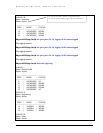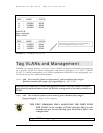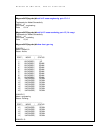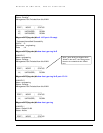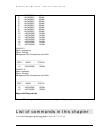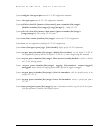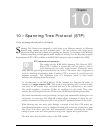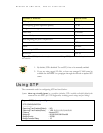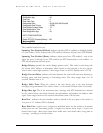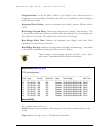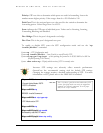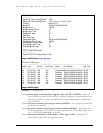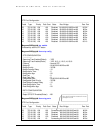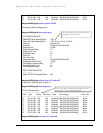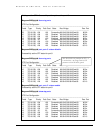
MAGNUM 6K SWITCHES, MNS-6K USER GUIDE
Bridge Hello Time : 2
Bridge Max Age : 20
Root Port : 0
Root Path Cost : 0
Designated Root : 80:00:00:20:06:25:ed:80
Designated Root Priority : 32768
Root Bridge Forward Delay : 15
Root Bridge Hello Time : 2
Root Bridge Max Age : 20
RSTP CONFIGURATION
-----------------
Rapid STP/STP Enabled(Global) : NO
Magnum6K25#
FIGURE 75 – Viewing STP configuration
The variables listed above are:
Spanning Tree Enabled (Global): indicates whether STP is enabled or disabled globally
i.e. if the values is YES, all ports have STP enabled, otherwise, all ports have STP disabled
Spanning Tree Enabled (Ports): indicates which ports have STP enabled – note in the
figure the ports 9 through 16 are STP enabled, but STP functionality is not enabled – so
STP will not perform on these ports
Bridge Priority: specifies the switch (bridge) priority value. This value is used along with
the switch MAC address to determine which switch in the network is the root device.
Lower values mean higher priority. Value ranges from 0 to 65535. Default value is 32768
Bridge Forward Delay: indicates the time duration the switch will wait from listening to
learning states and from learning to forwarding states. The value ranges from 4 to 30
seconds. Default value is 15
Bridge Hello Time: When the switch is the root device, this is the time between
messages being transmitted. The value is from 1 to 10 seconds. Default value is 2 seconds
Bridge Max Age: This is the maximum time a message with STP information is allowed
by the switch before the switch discards the information and updates the address table
again. Value ranges from 6 to 40 seconds with default value of 20 seconds
Root Port: indicates the port number, which is elected as the root port of the switch. A
root port of “0” indicates STP is disabled
Root Path Cost: A path cost is assigned to individual ports for the switch to determine
which ports are the forwarding points. A higher cost means more loops, a lower cost
means fewer loops. More loops equal more traffic and a tree which takes a long time to
converge – resulting in a slower system
125



